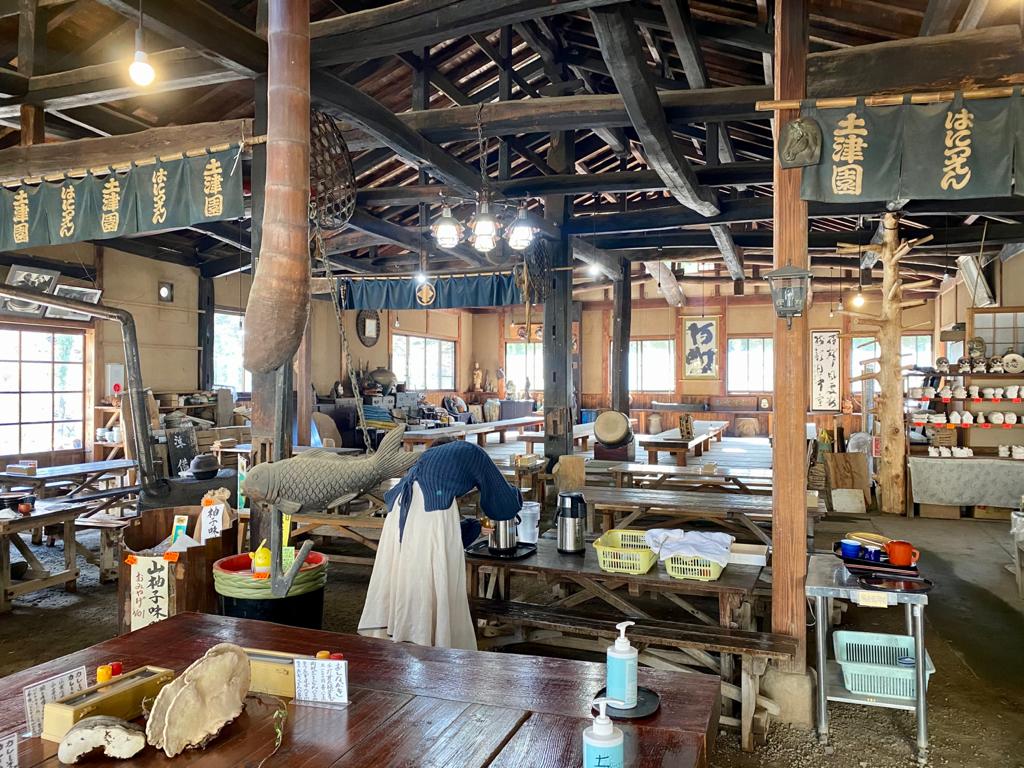Chichibu (秩父) is a rural city northwest of Tokyo, in Saitama Prefecture. Chichibu is a mostly mountainous area along the Arakawa River and is bordered by Tokyo, Yamanashi, Nagano and Gunma Prefectures. The hidden gem of Saitama has a rich history and culture and is beautifully located in Chichibu’s rural landscape. Silk farming is a common trade that people have used to earn money for centuries as the area is not very suitable for rice farming. Chichibu was originally built around the Chichibu Shrine, but it became a city in 1950 and has continued to expand since then, merging with other, smaller cities.
Saitama prefecture has recently become known as the setting for many popular anime series too. Various locations in Chichibu appear in famous anime like Anohana and The Anthem of the Heart. In 1969 the Seibu Chichibu Line was opened, making it easier than ever to travel to and from the region by train. Since then the economy in Chichibu has continued to be based within agriculture while expanding into tourism. Visitors to Chichibu can experience parks, shrines, mountains, lakes, festivals and local drinks. Let’s look at how one might spend a weekend in Chichibu experiencing all that it has to offer.
How to get to Chichibu (from Tokyo)
Since the unveiling of the Seibu Chichibu Line in 1969, Chichibu can be reached from Ikebukuro Station, in the northwestern part of Tokyo, within an hour and a half, making for an easy weekend or even day trip from Tokyo. Getting to Chichibu is especially easy when using the Red Arrow Limited Express train. Discount tickets can be purchased at many stations for a round trip option or two day pass option. These stations include Ikebukuro and Takadanobaba stations among others. The cost for a 2-day pass is ¥2,320 for adults and ¥1,180 for children. As soon as you get off the train you will be welcomed by the mountainous scenery of Chichibu!

Depending on where you you want to visit in Chichibu you can go around on foot or you rent also rent bicycles at the Chichibu Tourist Association, located in front of the station. You can rent the bicycles there from 2 hours for ¥300 to one day for ¥1,000.
Thing to see in Chichibu
Once you arrive in Chichibu you can explore all the wonderful things the area has to offer. Here we will discuss a few of these options, feel free to go out exploring. The people in Chichibu are friendly and there are many hidden gems. So let’s get to it.
1. The 34 Kannon Temple Circuit
The Chichibu 34 Kannon Sanctuary is a group of Japanese Buddhist temples that are connected by one route. These temples are in honor of the Buddhist deity Kannon, also known as Avalokitesvara, and many other names in Eastern Asia. Kannon is the Japanese name most commonly seen with some minor spelling differences here and there. Kannon is the god associated with compassion and mercy and can be depicted in Japan as both a male or a female. Kannon is very important in Japanese Pure Land Buddhism.

The 34 Kannon pilgrimage can be traced back to the 13th century when it only included 33 temples. A 34th temple was added in the 1500’s when Chichibu joined the pilgrimages of Saigoku in Kansai and Bando. An additional temple was needed to complete the journey with a total of 100 temples. More than half of the temples in Chichibu are in urban areas, and the entire trek is about 100 kilometers. Many of these temples appear as neighborhood temples and they are cared for and maintained by local people in the community. Admission to all the temples is free and some of the temples sell the traditional outfit. It is not necessary to wear this outfit, but this will make you recognizable as a pilgrim and the locals will recognize you and welcome you warmly. You can expect to receive a similar welcoming experience as the hospitality the Shikoku 88 Temple Pilgrimage is known for.
2. Hashidate Stalactite Cave
The Hashidate Limestone Cave (橋立鍾乳洞) faces the Urayama River near the western side of Mt. Buko (武甲山), one of the strangest looking mountains of Japan, and is about 140 meters long. The small cave was designated as a Prefectural Natural Monument in 1936 and it is the only cave that is open to the public in Saitama Prefecture. Conveniently, this cave is owned by the Hashidate-do Temple, which is temple number 28 on the pilgrimage route. You can explore the narrow cave for ¥200 and there is a restaurant near the entrance where you can enjoy local cuisine in a traditional setting.
3. Chichibu Yomatsuri (Night Festival)
The Chichibu Yomatsuri festival (秩父夜祭) started about 300 years ago and has become one of the most famous float festivals in all of Japan! It is held every year in the beginning of December. At this festival six giant floats are pulled by many people. On the floats there are kabuki performances and taiko drum players as beautiful paper-covered lanterns dangle on the sides of the moving floats. While all of this is happening, there are fireworks set off in the distance to illuminate the night sky. The fireworks last for more than two hours! The climax of the festival comes on the third and final day, December 3rd when all of the floats are lined up together. Additionally, the city is full of the typical things one would find at any Japanese festival: food stalls, games and drink vendors. It is one big party throughout the entire city.

4. Hitsujiyama Park
A short walk from the Seibu-Chichibu Station, Hitsujiyama Park (羊山公園) is a beautiful flower park widely known for their pink moss festival in spring. The pink and white shibazakura flowers color the hillside of the park, known as the Hill of Pink Moss. The flowers all carefully planted in order to create an amazing scenery on the hillside with Mt. Buko (武甲山) as the backdrop. The 1,304m tall mountain can be seen from the hillside, and you can take stunning pictures of it along with the beautiful flowers in spring. The flower park has all types of seasonal flower that create a seasonal display and from the top of the hill you can overlook the city of Chichibu. In spring many people come to the park for a daytrip enjoy a stunning view of the cherry blossoms!

5. Mount Buko
Mount Buko (武甲山) is the 1,304m high mountain that dominates the background of Chichibu. This strange looking mountain is completely made from limestone, a key ingredient to the cement that is used to built the infrastructure of the area but also of Tokyo. The intensive mining has left clear marks on the mountain. There are several hiking trails through the quiet cedar forest to the mountain summit from where you can enjoy a panoramic view of Chichibu city. It is a nice place to escape the the busy city life of Tokyo and get your dose of nature.

6. Chichibu Shrine
Founded about 2,100 years ago and rebuilt by Ieyasu Tokugawa, Chichibu Shrine (秩父神社) serves as the place to pray for the safety of Chichibu. The existing main building of the shinto shrine was built in the Edo period early architectural style and is well known for its elaborate carvings that include depictions of creatures like tigers, monkeys and dragons. Many of the carvings were created by the same artists that were also responsible for the decorations at the Toshogu Shrine in Nikko. Chichibu Shrine is also known for the Chichibu Night Festival and a short walk from the shrine you can also visit the Chichibu Festival Hall, a museum dedicated to the Chichibu Night Festival and other local festivals.

7. Icicles of Chichibu
While winter may not be your preferred time to travel and explore outdoors, the winter season is the perfect to time to spot some of Chichibu’s spectacular natural phenomenons: the icicles. The naturally formed icicles have formed over plants, rock and cliff surfaces and can be seen on several places including Onouchi, Misotsuchi, and Ashigakubo. The natural phenomenon can only be seen from mid-January to mid-February, the coldest time of the year and each location is illuminated for selected days during the winter season. The icicles of Onouchi and Ashigakubo can be explored for ¥200 and you can try some free amazake to warm up. The sites are located a bit far apart so we recommend going around by car but they are all accessible by public transport and some have scenic hikes around them for those feeling a bit more adventurous.

8. Seibu Chichibu Ekimae Onsen
After you’ve had your fill hiking, exploring parks and the festival scene, you can take a nice relaxing dip at an onsen. Chichibu has many onsen to choose from, so don’t be shy and try something new. One of the easiest onsen to access is the Seibu Chichibu Ekimae Onsen which is connected to the train station. There is a relaxing onsen available with the concept of Chichibu’s famous night festival. In total there are six different indoor baths available and four outdoor baths from where you can enjoy a view of the mountains at the the background. The admission to the onsen is between ¥1,000 and ¥1,500, dependent on the package chosen and the time of visit. Weekends and holidays command the higher price. Additionally amenities, such as a bedrock bath and premium lounge can be purchased for a small upcharge. This is a great way to wind down after a busy weekend exploring the local sights and get your souvenir. The large facility includes shops where one can purchase omiyage or other souvenirs as well as a food court for those who are hungry after a long day. There are different restaurants selling different types of cuisine to satisfy anyone or if you are looking for a small snack they also have ice cream and delicious local cream puffs.
Where to stay in Chichibu

Chichibu is a fantastic place to take a break and recharge for the weekend. With all the natural sites there is something for everyone. Active travelers will enjoy the natural beauty and hiking trails while more leisurely travelers will enjoy the festivals and relaxing onsen. It’s hard to believe that these vibrant activities can all be found in the serene city of Chichibu, which is just a short 90-minute train ride away from Tokyo. Let us know what activities you enjoyed the most in Chichibu or what you are planning to do first on your visit and don’t forget to book your holiday to Chichibu today.
Follow us on Instagram, Facebook and Twitter for more travel inspiration. Or tag us to get featured!
Happy travelling!
Other articles you might like

Trevor Jones is an educator and an aspiring marketer. Originally from the United States, he moved to Tokyo in 2017. Trevor enjoys exploring new destinations and sharing his experiences. He can be found on Instagram at @tjones312
This post contains some affiliate links. When you click through and make a purchase we may receive some commission, at no extra costs to you.









